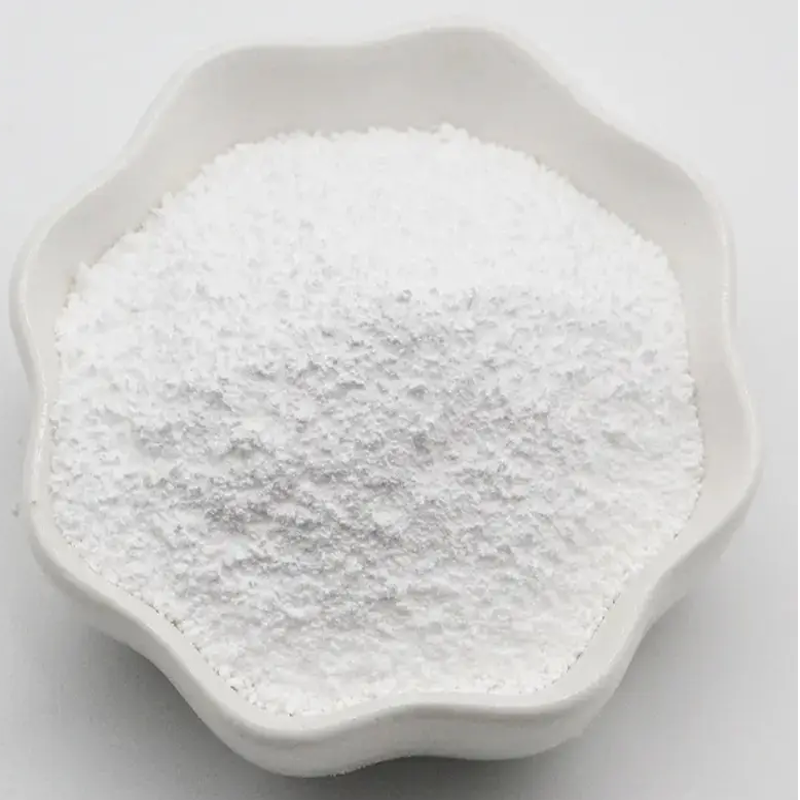-
Categories
-
Pharmaceutical Intermediates
-
Active Pharmaceutical Ingredients
-
Food Additives
- Industrial Coatings
- Agrochemicals
- Dyes and Pigments
- Surfactant
- Flavors and Fragrances
- Chemical Reagents
- Catalyst and Auxiliary
- Natural Products
- Inorganic Chemistry
-
Organic Chemistry
-
Biochemical Engineering
- Analytical Chemistry
- Cosmetic Ingredient
-
Pharmaceutical Intermediates
Promotion
ECHEMI Mall
Wholesale
Weekly Price
Exhibition
News
-
Trade Service
Even if a global shortage of vaccines is a problem, SARS-CoV-2 is still very likely to mutate and form new mutants
.
As the viral genome mutates, the virus has "learned" to evade immunity, making the vaccine potentially ineffective
.
To control the outbreak, scientists have been collecting samples from infected people and monitoring new mutations through genetic sequencing
.
Although this method is accurate, it is time-consuming and expensive
.
Researchers at Kyoto Institute of Technology and Kyoto Medical University have come up with an alternative, more time-saving approach based on Raman spectroscopy and the ability of spectrally-derived barcodes to identify mutant strains
.
Raman barcodes encode variant strains of SARS-CoV-2 "Raman spectroscopy is a very powerful method in microbiology, providing powerful information at the molecular level
.
" Recently published as co-first author in Advanced Science Giuseppe Pezzotti, who published a study, said, "Raman spectroscopy can also be used to monitor metabolic and physiological changes in living cells in situ, including the molecular mechanisms of viral infection (see image)
.
We also have data on different influenza strains.
" , and their inactivation mechanisms were collected using Raman spectroscopy
.
" Pezzotti and his colleague Osam Mazda hope to quickly apply this method at the onset of the current viral pandemic, giving scientists effective information and controlling the situation
.
Identifying the Changing Structural Elements of Viruses
.
The sample is illuminated with monochromatic light (usually a laser), and the scattered light is collected and analyzed
.
Most of the scattered light has the same wavelength as the incident laser light, but a small fraction is scattered at a different wavelength because it is absorbed and re-emitted through chemical bonds in the molecule
.
This is called "Raman light," and it is affected by the weight of atoms, the strength of chemical bonds, and their spatial arrangement in the molecule
.
The simplest analogy is the "ball-spring model", where chemical bonds between atoms can be thought of as a spring connecting two balls
.
The frequency of vibration, influenced by factors such as spring stiffness, the weight of the ball, and how it is attached to the spring, determines how the ball "bounces" and converts kinetic energy back into the system
.
Likewise, when light or energy reaches a certain frequency, chemical bonds absorb that energy and re-emit some of it as light
.
Depending on the factors mentioned earlier, different molecular elements scatter incoming light in specific ways and emit characteristic Raman spectra
.
Raman spectroscopy thus provides a "chemical fingerprint" that Pezzotti and Mazda have linked directly to the molecular structure of different mutant strains of SARS-CoV-2
.
Pezzotti said: "At the molecular level, there are many structural details in the variant strains of the SARS-CoV-2 virus that differ
.
These include amino acid residues, RNA bases, and secondary structures of proteins, all of which are clearly visible in Raman spectroscopy.
For example, sulfur is present in two amino acids, methionine and cysteine, both of
which are present in viral proteins and form tight junctions with carbon atoms.
It is clearly visible in the Raman spectrum of different frequencies
.
Using these chemical signatures, which differ by the molecular structure of the virus, the team discovered key differences between the mutant strains
.
"The molecular symmetry of methionine and cysteine differs markedly among the different SARS-CoV-2 variant strains," added Pezzotti
.
In addition, the team found that they could use purines and pyrimidines in RNA bases as " chemical fingerprints" to distinguish virus strains
.
"These bases have different molecular vibrations due to the structure of their aromatic rings," Pezzotti said
.
While these characteristic vibrations, along with the Raman signal, can be localized to every RNA base in the genome, their relative intensities are not only In part, it reflects their abundance in RNA, but also the order in which they are arranged in RNA
.
"Creating barcodes for different mutant strains to efficiently keep records combined with clues provided by different structural elements, the team was able to infer that Changes in the structure of the final spike protein and identify parts of the viral genome that have changed between variant strains
.
So far, the team has collected Raman data for some known mutant strains of SARS-CoV-2, including the Delta mutant strain
.
The next step is to design "Raman barcodes" for each variant strain based on their spectra
.
And this is achieved by the following algorithm: each band in the spectrum is defined as a line with a width equal to 1/50 of its bandwidth, and the distance between adjacent lines is proportional to the area of the band
.
"This is just one of many ways to build barcodes and even QR codes using Raman spectroscopy," Pezzotti said
.
The goal is to create an efficient means of electronic record-keeping and to improve the ability to identify many of the structural features of mutant strains hidden in Raman spectroscopy
.
"Raman spectroscopy can both resolve the virus structure at the molecular scale and quickly provide information about the mutation of the new coronavirus, which may be the key to future virological research and virus tracking
.
" Mazda added: "Unlike traditional PCR For detection, Raman spectroscopy can enable rapid identification of variants, as long as it matches rapid and efficient virus isolation and concentration techniques in clinical samples
.
” WILEY Original: Giuseppe Pezzotti, et al.
, Raman Molecular Fingerprints of SARS-CoV-2 British Variant and the Concept of Raman BarcodeAdvanced Science (2021)DOI: 10.
1002/advs.
202103287AdvancedScienceNewsWiley's official WeChat platform for scientific research information Long press the QR code to follow us to share cutting-edge information|Focus on scientific research trends to publish scientific research news or apply for information sharing, please contact: ASNChina@Wiley.
com
.
As the viral genome mutates, the virus has "learned" to evade immunity, making the vaccine potentially ineffective
.
To control the outbreak, scientists have been collecting samples from infected people and monitoring new mutations through genetic sequencing
.
Although this method is accurate, it is time-consuming and expensive
.
Researchers at Kyoto Institute of Technology and Kyoto Medical University have come up with an alternative, more time-saving approach based on Raman spectroscopy and the ability of spectrally-derived barcodes to identify mutant strains
.
Raman barcodes encode variant strains of SARS-CoV-2 "Raman spectroscopy is a very powerful method in microbiology, providing powerful information at the molecular level
.
" Recently published as co-first author in Advanced Science Giuseppe Pezzotti, who published a study, said, "Raman spectroscopy can also be used to monitor metabolic and physiological changes in living cells in situ, including the molecular mechanisms of viral infection (see image)
.
We also have data on different influenza strains.
" , and their inactivation mechanisms were collected using Raman spectroscopy
.
" Pezzotti and his colleague Osam Mazda hope to quickly apply this method at the onset of the current viral pandemic, giving scientists effective information and controlling the situation
.
Identifying the Changing Structural Elements of Viruses
.
The sample is illuminated with monochromatic light (usually a laser), and the scattered light is collected and analyzed
.
Most of the scattered light has the same wavelength as the incident laser light, but a small fraction is scattered at a different wavelength because it is absorbed and re-emitted through chemical bonds in the molecule
.
This is called "Raman light," and it is affected by the weight of atoms, the strength of chemical bonds, and their spatial arrangement in the molecule
.
The simplest analogy is the "ball-spring model", where chemical bonds between atoms can be thought of as a spring connecting two balls
.
The frequency of vibration, influenced by factors such as spring stiffness, the weight of the ball, and how it is attached to the spring, determines how the ball "bounces" and converts kinetic energy back into the system
.
Likewise, when light or energy reaches a certain frequency, chemical bonds absorb that energy and re-emit some of it as light
.
Depending on the factors mentioned earlier, different molecular elements scatter incoming light in specific ways and emit characteristic Raman spectra
.
Raman spectroscopy thus provides a "chemical fingerprint" that Pezzotti and Mazda have linked directly to the molecular structure of different mutant strains of SARS-CoV-2
.
Pezzotti said: "At the molecular level, there are many structural details in the variant strains of the SARS-CoV-2 virus that differ
.
These include amino acid residues, RNA bases, and secondary structures of proteins, all of which are clearly visible in Raman spectroscopy.
For example, sulfur is present in two amino acids, methionine and cysteine, both of
which are present in viral proteins and form tight junctions with carbon atoms.
It is clearly visible in the Raman spectrum of different frequencies
.
Using these chemical signatures, which differ by the molecular structure of the virus, the team discovered key differences between the mutant strains
.
"The molecular symmetry of methionine and cysteine differs markedly among the different SARS-CoV-2 variant strains," added Pezzotti
.
In addition, the team found that they could use purines and pyrimidines in RNA bases as " chemical fingerprints" to distinguish virus strains
.
"These bases have different molecular vibrations due to the structure of their aromatic rings," Pezzotti said
.
While these characteristic vibrations, along with the Raman signal, can be localized to every RNA base in the genome, their relative intensities are not only In part, it reflects their abundance in RNA, but also the order in which they are arranged in RNA
.
"Creating barcodes for different mutant strains to efficiently keep records combined with clues provided by different structural elements, the team was able to infer that Changes in the structure of the final spike protein and identify parts of the viral genome that have changed between variant strains
.
So far, the team has collected Raman data for some known mutant strains of SARS-CoV-2, including the Delta mutant strain
.
The next step is to design "Raman barcodes" for each variant strain based on their spectra
.
And this is achieved by the following algorithm: each band in the spectrum is defined as a line with a width equal to 1/50 of its bandwidth, and the distance between adjacent lines is proportional to the area of the band
.
"This is just one of many ways to build barcodes and even QR codes using Raman spectroscopy," Pezzotti said
.
The goal is to create an efficient means of electronic record-keeping and to improve the ability to identify many of the structural features of mutant strains hidden in Raman spectroscopy
.
"Raman spectroscopy can both resolve the virus structure at the molecular scale and quickly provide information about the mutation of the new coronavirus, which may be the key to future virological research and virus tracking
.
" Mazda added: "Unlike traditional PCR For detection, Raman spectroscopy can enable rapid identification of variants, as long as it matches rapid and efficient virus isolation and concentration techniques in clinical samples
.
” WILEY Original: Giuseppe Pezzotti, et al.
, Raman Molecular Fingerprints of SARS-CoV-2 British Variant and the Concept of Raman BarcodeAdvanced Science (2021)DOI: 10.
1002/advs.
202103287AdvancedScienceNewsWiley's official WeChat platform for scientific research information Long press the QR code to follow us to share cutting-edge information|Focus on scientific research trends to publish scientific research news or apply for information sharing, please contact: ASNChina@Wiley.
com







